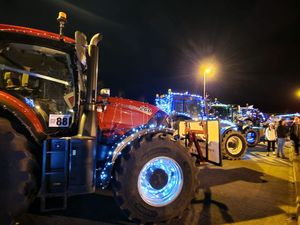Flying Scotsman in Shropshire: Iconic engine steams through county - with pictures and video
Fans lined platforms at stations and packed onto railway bridges across the county to get a glimpse of the Flying Scotsman today.

The iconic steam train was pulling passengers from Shrewsbury Railway Station before passing through Church Stretton, Craven Arms, Ludlow and Leominster before heading off through Hereford on the way to its final destination in Cardiff.
The engine left Shrewsbury at about 12pm today after passing through the north of Shropshire in the morning.
The trip was part of a 'Days Out with Flying Scotsman' which was sold out.
Readers' pictures and video of the Flying Scotsman
Melanie Thomas, 53, had travelled for three hours from Llantrisant with her son Luke Thomas.
She said: "It's his dream to see it. Luke's the big fan. We go up and down the country seeing locomotives, and we booked this last year"
Luke, aged 15, said: "I've been a rail fan since I was about two. This is the most famous steam train in the world."
Five-year-old Morgan Goodfields had a view of the Flying Scotsman higher than the rest of the fans on the platform, up on his father's shoulders.
His father, David Goodfields, 37, said the tickets were a present as both him and his son were big steam train fans.
The company director added: "Every night this week Morgan has been asking how many more sleeps it is until he sees it.
"Morgan was given a day off by his school especially for this."
Morgan said: "I like the noises it makes when it chugs, but not when it whistles."
Shirley Borcho, travelled from Plymouth for the event with a number of family members.
The pensioner said: "This is the first time we have seen it.
"It's been on our bucket list for some time. It's beautiful, it really is awesome."
Reporter Jordan Reynolds was at Shrewsbury Railway Station
Flying Scotsman was originally built in Doncaster for the London and North Eastern Railway (LNER), emerging from the works on 24 February 1923 and initially numbered 1472. It was designed by Sir Nigel Gresley as part of the A1 class – the most powerful locomotives used by the railway.
By 1924, when it was selected to appear at the British Empire Exhibition in London, the loco had been renumbered 4472 – and been given the name ‘Flying Scotsman’ after the London to Edinburgh rail service which started daily at 10am in 1862.
It was the first steam engine authenticated at travelling at 100mph in November 1934.





